Capas y parámetros ocultos
Introducción al aprendizaje profundo con PyTorch

Jasmin Ludolf
Senior Data Science Content Developer, DataCamp
Apilar capas con nn.Secuencial()
# Create network with three linear layers model = nn.Sequential(nn.Linear(n_features, 8),nn.Linear(8, 4), nn.Linear(4, n_classes))
- La entrada pasa por las capas lineales
- Las capas dentro de
nn.Sequential()son capas ocultas
Apilar capas con nn.Sequential()
# Create network with three linear layers
model = nn.Sequential(
nn.Linear(n_features, 8), # n_features represents number of input features
nn.Linear(8, 4),
nn.Linear(4, n_classes) # n_classes represents the number of output classes
)
- La entrada pasa por las capas lineales
- Las capas dentro de
nn.Sequential()son capas ocultas n_featuresyn_classesestán definidos por el conjunto de datos
Añadir capas

Añadir capas

Añadir capas
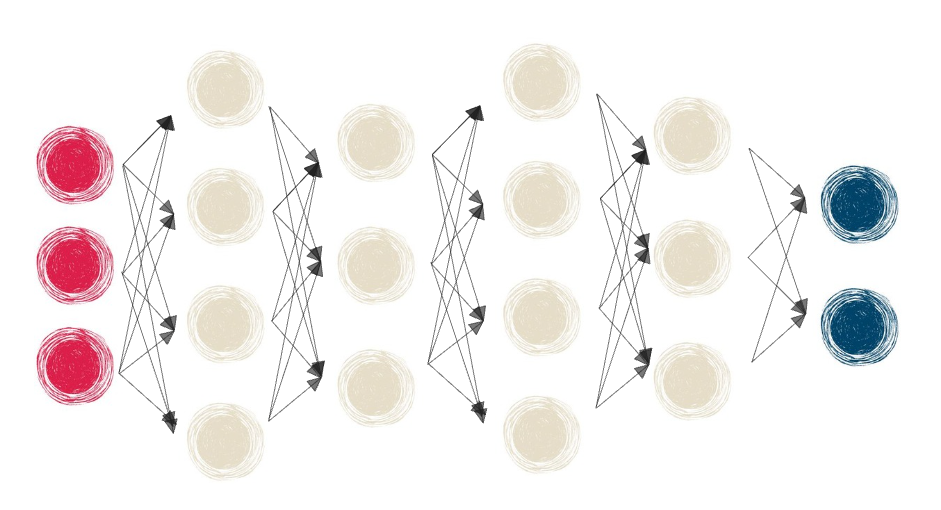
Añadir capas

Añadir capas
# Create network with three linear layers
model = nn.Sequential(
nn.Linear(10, 18),
nn.Linear(18, 20),
nn.Linear(20, 5)
)
Añadir capas
# Create network with three linear layers
model = nn.Sequential(
nn.Linear(10, 18), # Takes 10 features and outputs 18
nn.Linear(18, 20),
nn.Linear(20, 5)
)
- Entrada 10 ➡ Salida 18 ➡ Salida 20 ➡ Salida 5
Añadir capas
# Create network with three linear layers
model = nn.Sequential(
nn.Linear(10, 18),
nn.Linear(18, 20), # Takes 18 and outputs 20
nn.Linear(20, 5)
)
- Entrada 10 ➡ Salida 18 ➡ Salida 20 ➡ Salida 5
Añadir capas
# Create network with three linear layers
model = nn.Sequential(
nn.Linear(10, 18),
nn.Linear(18, 20),
nn.Linear(20, 5) # Takes 20 and outputs 5
)
- Entrada 10 ➡ Salida 18 ➡ Salida 20 ➡ Salida 5
Las capas están formadas por neuronas
$$
- Totalmente conectado cuando cada neurona enlaza con todas las neuronas de la capa anterior
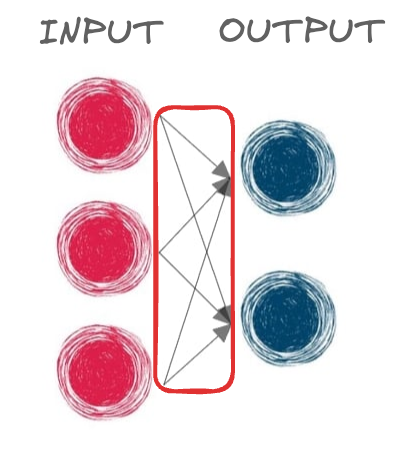
Las capas están formadas por neuronas
$$
- Totalmente conectado cuando cada neurona enlaza con todas las neuronas de la capa anterior
$$
- Una neurona en una capa lineal:
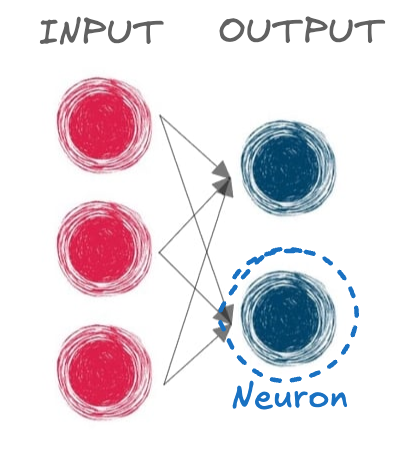
Las capas están formadas por neuronas
$$
- Totalmente conectado cuando cada neurona enlaza con todas las neuronas de la capa anterior
$$
- Una neurona en una capa lineal:
- Realiza una operación lineal utilizando todas las neuronas de la capa anterior
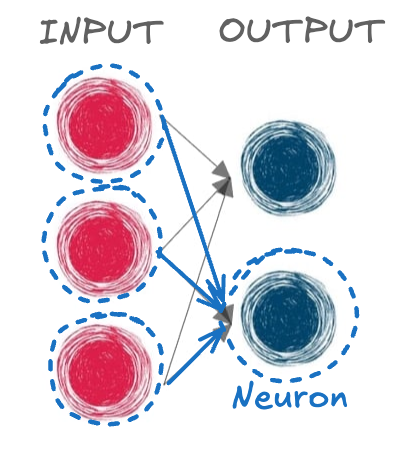
Las capas están formadas por neuronas
$$
- Totalmente conectado cuando cada neurona enlaza con todas las neuronas de la capa anterior
$$
- Una neurona en una capa lineal:
- Realiza una operación lineal utilizando todas las neuronas de la capa anterior
- Tiene N+1 parámetros: N de las entradas y 1 para el sesgo
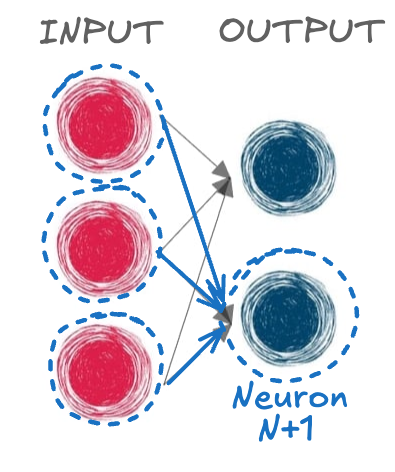
Parámetros y capacidad del modelo
- Más capas ocultas = más parámetros = mayor capacidad del modelo
$$

Parámetros y capacidad del modelo
- Más capas ocultas = más parámetros = mayor capacidad del modelo
$$
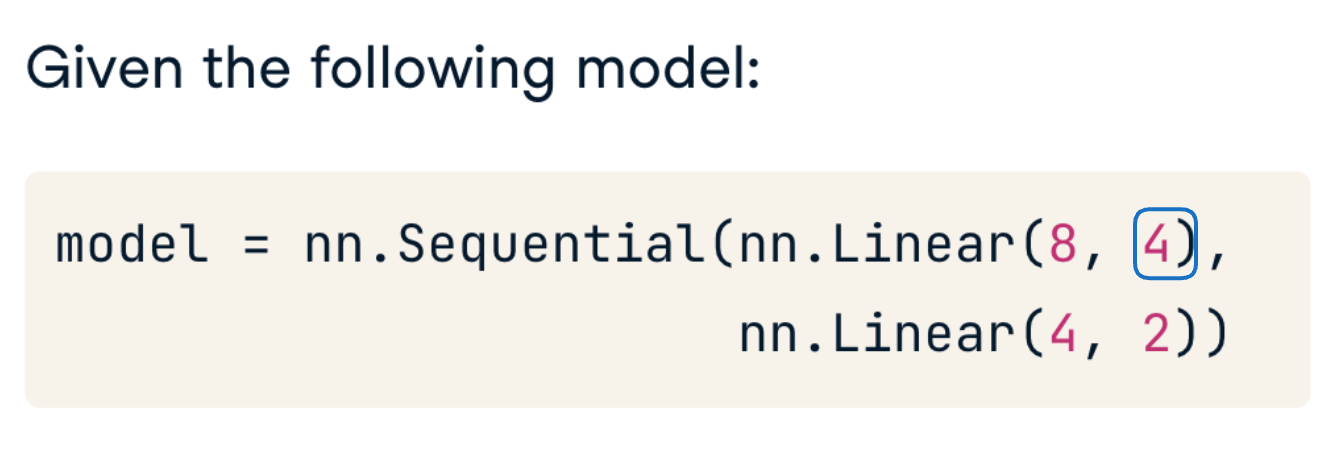
$$
Cálculo manual de parámetros:
- La primera capa tiene 4 neuronas, cada neurona tiene 8+1 parámetros. 9 por 4 = 36 parámetros
Parámetros y capacidad del modelo
- Más capas ocultas = más parámetros = mayor capacidad del modelo
$$

$$
Cálculo manual de parámetros:
- La primera capa tiene 4 neuronas, cada neurona tiene 8+1 parámetros. 9 por 4 = 36 parámetros
Parámetros y capacidad del modelo
- Más capas ocultas = más parámetros = mayor capacidad del modelo
$$
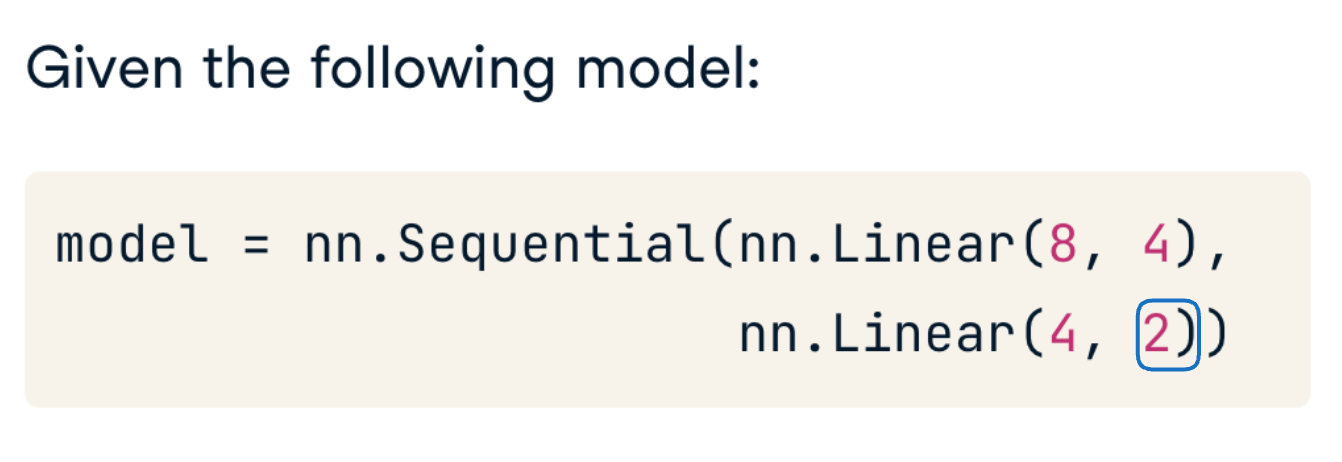
$$
Cálculo manual de parámetros:
- La primera capa tiene 4 neuronas, cada neurona tiene 8+1 parámetros. 9 por 4 = 36 parámetros
- La segunda capa tiene 2 neuronas, cada neurona tiene 4+1 parámetros. 5 por 2 = 10 parámetros
Parámetros y capacidad del modelo
- Más capas ocultas = más parámetros = mayor capacidad del modelo
$$

$$
Cálculo manual de parámetros:
- La primera capa tiene 4 neuronas, cada neurona tiene 8+1 parámetros. 9 por 4 = 36 parámetros
- La segunda capa tiene 2 neuronas, cada neurona tiene 4+1 parámetros. 5 por 2 = 10 parámetros
- 36 + 10 = 46 parámetros que se pueden aprender
Parámetros y capacidad del modelo
- Más capas ocultas = más parámetros = mayor capacidad del modelo
$$

$$
Utilizando PyTorch:
.numel(): devuelve el número de elementos del tensor
total = 0
for parameter in model.parameters():
total += parameter.numel()
print(total)
46
Equilibrio entre complejidad y eficacia

¡Vamos a practicar!
Introducción al aprendizaje profundo con PyTorch

